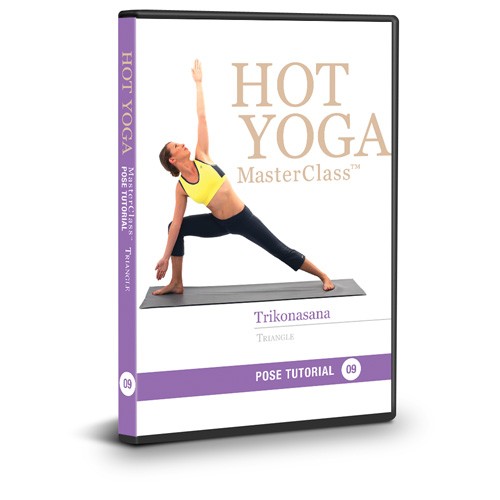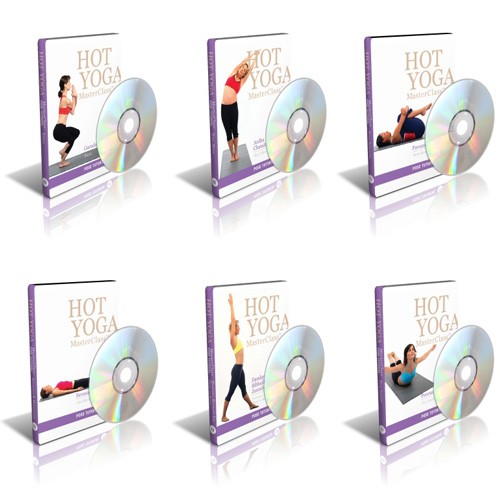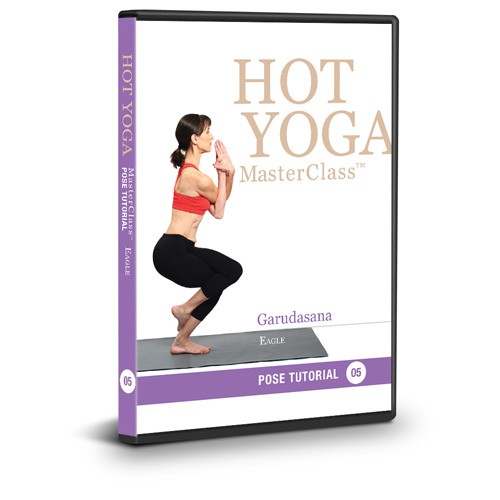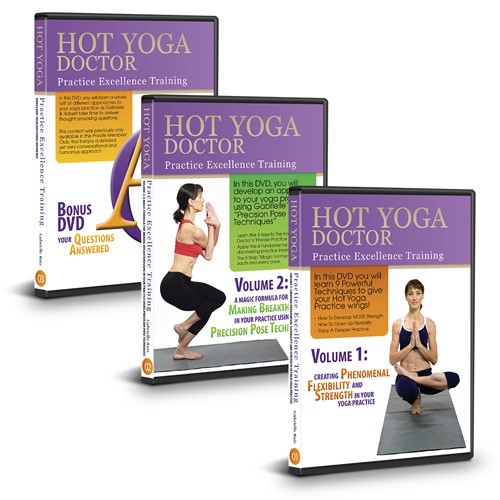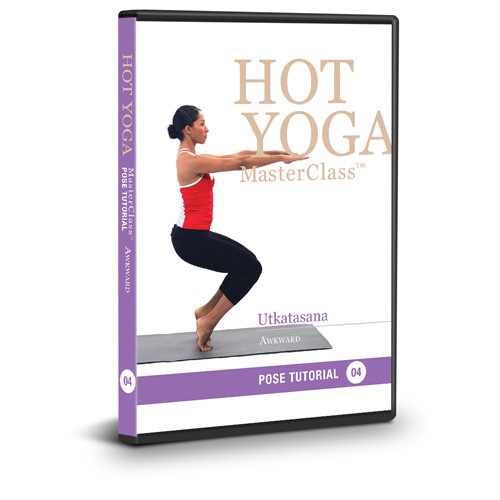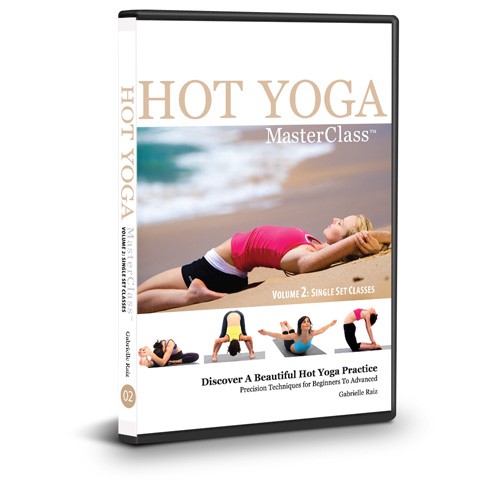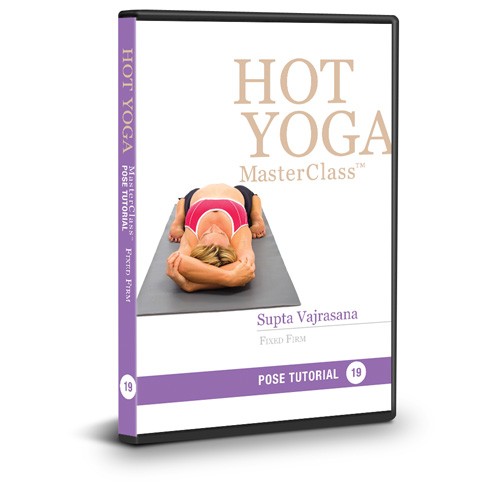The Hot Yoga Doctor – Free Bikram and Hot Yoga Resources › Hot Yoga Doctor Forum › General Hot Yoga Discussion › Hot Yoga *faq* › Dangers of Bikram dialogue?
The Hot Yoga Doctor – Free Bikram and Hot Yoga Resources › Hot Yoga Doctor Forum › General Hot Yoga Discussion › Hot Yoga *faq* › Dangers of Bikram dialogue?
-
AuthorPosts
-
Hi there,
I know I’m about to open a very controversial topic, so I’m going to precede this by saying I love Bikram yoga and I do hope this doesn’t come across as disrespectful. I have been practising about 3 times a week since beginning of June and have seen amazing changes in my mind as well as my body. I initially got into Bikram because I have a history of eventually injuring myself in every type of exercise I pick up (usually from pushing myself too far, or doing too much), and Bikram was hailed as therapeutic, with much less chance of injury than other types of yoga. Nevertheless, in my last class I have managed to injure my lower back (one of the only parts of my body that was never injured before) so thoroughly that my chiropractor has forbidden me to do any kind of yoga for at least a month. This makes me wonder…
What does everybody think about the dialogue in Bikram’s classes with regards to its “safety” for silly, ego-driven, competitive people like me?
I know that the dialogue is somewhat “sacred” and has to be repeated verbatim, especially by new teachers, so there is probably not a lot of flexibility for individual adaptation there. But certain parts of it (eg. “push push push”, “your back’s gonna hurts like hell, don’t be scared”, “pull as hard as you can”, “go to your maximum expression” etc.), for me really encourage that attitude, and make me focus mainly on getting deeper into the posture, rather than correct form. This effect is exacerbated by the mirrors making me focus on outward appearance, and, let’s be honest, comparing myself to how deeply others go into the postures, rather than listening into my body for how a posture feels.
This is probably all just my own head and history talking, but I’m curious about your opinions, and whether you think it’s worthwhile trying to talk to my teachers about it, so that if there are more people like me, the teachers may contact Bikram himself perhaps. I know that he does make changes to how he teaches the dialogue (e.g. in floor bow, older teachers still say start with six inches between knees, whereas newer ones will say knees together).
I’ve got the feeling that Bikram yoga attracts many of these personalities who have a penchant towards pushing themselves beyond the limits of their bodies, at least in my studio, so I’d really like to find out if this has been a problem for others, and if so, what could be done to make it a safer practise.
Cheers people!
RomyAnonymous
GuestNovember 1, 2010 at 2:15 amPost count: 98Hi there! I’ve been doing Bikrams since Februrary of last year and understand exactly what you are saying. I completely understand the dialogue and about how it encourages you to push push push and focusing on the exterior. However, I really have to say that what you feel with respect to being a type A driven personailty and how it affects you really isn’t a Bikram’s issue. And the fact that you are injured through your practice is probably less about Bikrams yoga and more about you pushing yourself past the discomfort zone into the pain zone.
In any sport, a push push push past what you know or feel to be your body limits into a true pain zone will result in injury. I can pick up any number of training manuals that tell you to, for example, lift weights until you reach muscle failure, or do fartlek or sprint training in the pain zone, or hill repeats on a bike to exhaustion. You can join a Masters Swim Club where you do timed pool laps well into your anaerobic training zone. You can choose to overexert yourself in any sport to the point of injury. So I don’t think this is really a Bikram’s issue. It is, I fear, a personality issue and I really don’t think the dialogue needs to me modified to make the practice ‘safer’ for anyone. After all, we are in charge of our own bodies. If I am in a spin class where the instructor urged me into a cardio or muscular situation I’m not comfortable with, I just won’t go there. I am responsible for myself.
I think the dialogue is more about encouraging people to move into the discomfort zone and to learn to NOT confuse this with serious pain. This is why Bikram’s dialogue says “don’t worry, your back will hurt like hell…” For the usual person, who has rarely experienced even the discomfort zone, the dialogue reassures you that if you feel some discomfort you will be OK and survive. Now of course there ARE those who will take it to the extreme. This is where being the ultimate authority over your body and what you do takes hold in most people. Its the concept of knowing yourself and your limits and experimenting slowly with them.
As for viewing yourself in the mirror and comparing yourself and so on, well Bikram DOES say “CHECK YOUR EGO AT THE DOOR”…in other words, yoga is about you, your mind body connection, and your capabilities on any given day and NOT about what your neighbor can do or how you look like in the mirror. The mirrors are there so you can check your proper form and make corrections, NOT to see if you are as fully into the pose as your neighbor. This isn’t a mirror issue, it is an issue of how you are using the mirror. Take tree pose, for example. I use the mirror to make sure my shoulders are level, my hips are level, and my hand is correctly in position at my chest. NOT to see if I look better than my neighbor or to see how I look in my costume.
All that being said, I think you are experiencing what alot of type A personalities experience when they are new to the practice. The desires to “master” the poses as soon as possible, to see how you do compared to others in the class, and to “feel the burn” are all things that we need to check at the door when we practice yoga. For many of us, this is the hardest part of the practice, but ultimately is the most rewarding.
Becoming humble, and mastering the competitive type A perfectionistic part of us is the key, not thinking that the practice or the dialogue is inherently “dangerous” and in need of modification for safety’s sake. After all, we can’t protect all people from themselves all of the time in all situations. Bikram’s is what it is. Students pick up pretty quickly with respect to what Bikrams is about and what it involves, and some will continue with the practice and some just won’t. Personal choice, and personal responsibility is paramount in any physical activity that one chooses to do.
And don’t get me started with respect to your chiropractor’s advice!
Anyways, that’s just my own humble opinion…to be taken for what its worth!Best of luck,
FrieaHi Romy and Freia
Yes, I do get what you’re saying Freia about the way people shouldn’t compare themselves to others. It does get easier to focus on oneself over time.
Romy, I also love this yoga and I don’t believe you are being disrespectful. Where’s the disrespect in questioning something? Especially when the thing you are questioning is not serving you in the best way possible.
Here’s something to consider: Why are so many people looking around in the first place? If the dialog were doing what it was supposed to do then I wouldn’t have this forum. Everything would be crystal clear and the words would guide everyone into the poses safely and there wouldn’t be nearly as many problems or injuries as there obviously are.
AND … people wouldn’t need to look around as much as they do. Romy, I believe that students like you started their practice always having to look around because the instructions aren’t quite enough for you to follow by listening to the instructions and only watching yourself.
Sure, seeing others doing the poses can help but it shouldn’t be the primary source of information gathering. Unfortunately this is the way most newbies learn – particularly when the verbatim script is continually and repeatedly delivered.
Yoga is not a gladiatorial endeavor. There are deeper issues involved that are not just dialog issues, or mirror issues. They could have something to do with the hot yoga culture. There definitely is an element ingrained about pushing through barriers that could be communicated better (to go beyond making it mainly about the physical).
These poses are NOT supposed to be painful and they’re not supposed to make you struggle. The struggle comes from the normal stuff like your ability to breathe or put up with (healthy levels of) heat … and the list goes on, but you get the picture.
At the moment you’ve been having terrible problems due to technique and a misinterpretation of the poses. That misinterpretation could be your teacher delivering the instructions or you trying to make sense of them in your body, or a combination! But if you’re not ‘getting’ it then your teachers should see that you have a problem and correct their instruction so that YOU do get it.
I have my own opinion about verbatim script teaching. I don’t agree with it. This is what makes my Hot Yoga MasterClass Manual so popular (and used by MANY Bikram Yoga Trained Teachers and Affiliated Studios around the world – and that’s the truth!).
Can you talk to your studio about it? Well, maybe. But if they have a group of teachers that all teach the same class then chances are you will not make a change there. There are plenty of teachers and studios out there who strongly defend the word-for-word script and there are plenty out there who move beyond it to give what I believe (IMHO) is a better, more connected, safe and inspiring class. Even if you do choose to continue at that studio, YOU CAN do something about improving your practice. You can start here, (use the forum, use the HYMC manual).
I note from your other post that you actually are now and feeling a better non-painful response from your body. Yippeeeee! 😉 Thanks for letting me know that my recommendations worked.
I look forward to responding to your other post in depth after a reread, and hearing of your progress
Namaste
Gabrielle 🙂Hi Freia and Gabrielle!
Wow, big thanks to both of you for your long, detailed replies. I feel truly humbled by how much effort everyone on this forum puts into passing on their passion of hot yoga, and I feel very lucky to have found this in the www.
@ Freia: yes, I totally agree – as I said, I’m quite aware of having a history of injury in just about anything I do for exercise. So I’m not blaming Bikram at all for my injury, sorry if it came across like that. This is totally a personality issue, yes. I do realise how dumb this is, especially not having the mental presence to KNOW the boundaries of where discomfort becomes pain. To use your example, I would totally be the person in the spin class and who would still keep going as hard as I can even with my heart coming out through my mouth and eventually fall off the bike dead if the instructor didn’t stop pushing me. 😉
And the pain and discomfort related to that personality issue is why lot of people like me are drawn to this kind of yoga, hoping to find a way toward calmness, peace of mind, letting go of the ego, and healing the body.
This is a long process, however, as you say “the hardest part of the practise”, and until it becomes second nature, I just get the feeling that the way Bikram Yoga is taught may exacerbate the problem for precisely those people who go there to work on it, and who seem to make up a large part of the class (at least in my studio).
I wasn’t very clear on my mirror issue – I don’t actively compare myself to others; however, I can’t help seeing them in my peripheral vision, and the process of trying to imitate their poses is pretty much subconscious. This particularly difficult to control for someone like me, who is not an auditory learner at all, and automatically seeks visual clues.
Bikram’s stipulation of “leave your ego at the door” is certainly helpful to bear in mind, but in reality impossible to do for all but the most accomplished yogis. In fact, it makes me chuckle a bit coming from someone who wears diamond-encrusted Rolexes and gets around in a Rolls Royce. 🙂
@ Gabrielle: Thanks for your thoughtful and inspiring comments. I’m relieved that it’s not just me who has trouble with following purely verbal instructions. Come to think of it, the teachers actually do seem to acknowledge that in my studio: if there is a new student, they will always tell them to look around the room at other students if they don’t get from the dialogue what the posture is supposed to look like. I guess this may be where the trouble started for me, as my studio is very young (1year), and most students have not got the kind of form that should be used as an example.
Wonderful to know that the poses are NOT supposed to make you struggle. I really, utterly, misunderstood that part of the dialogue. Typical “type A“ mistake! %-P
Your Hot Yoga MasterClass Manual sounds fantastic – I will start saving up for it straight away.
I may also try to talk to my studio, if I can muster the courage. Although the teachers do all stick to the dialogue quite religiously, they are lovely, open people who, I’m sure, welcome open discussion. Perhaps so far simply nobody has mentioned these aspects to them, preferring to drop out instead.
If anyone else has experiences they want to share regarding this topic, I’d love to hear from you!
Namaste!
Romy
🙂Hi Romy, I agree with the responses you have received and just want to reinforce a couple of items: I am also a type A very competitive person that has been practicing for 15 months and you must ignore any instructions that put you past your limits. Easier said than done but it took me to have a back problem as well before I simply had to say to myself that I would modify a pose, standing head to knee for example or to simply sit out a pose if my back was bad that day. Although all back problems are different, my chiropractor loves that fact that I am doing so much yoga and has said that my injury would have been worse if I was not doing it. I have recently mixed some basic haltha yoga with several days of Bikram and found that has helped me a great deal. Be confident in yourself, ignore others, and take charge of you. Don’t be a hero because it may eventually put you on the shelf with a serious problem.
Hi msully,
Thanks heaps for your reply! So good to know that there are other people out there who have had the same problem and found a way to deal with it. Yes, ignoring the instructions will be a big challenge and I’m glad you stressed that point again.
In my studio there is a lot of emphasis on following the dialogue EXACTLY, so it will take a bit of willpower. But you are so right, it’s not worth playing the hero and then ending up with permanent damage.
Good idea about trying other yoga, too. Were there any specific poses that you found have helped or was it just the fact of having personal instruction and correction?
And what was the modification you did to standing head to knee that helped you?
My chiro is also very pleased I’m doing yoga and thinks it has helped my body deal with the injury much faster, but she did say to be VERY careful with forward bends once I go back…
Cheers
Romy -
AuthorPosts
- You must be logged in to reply to this topic.

